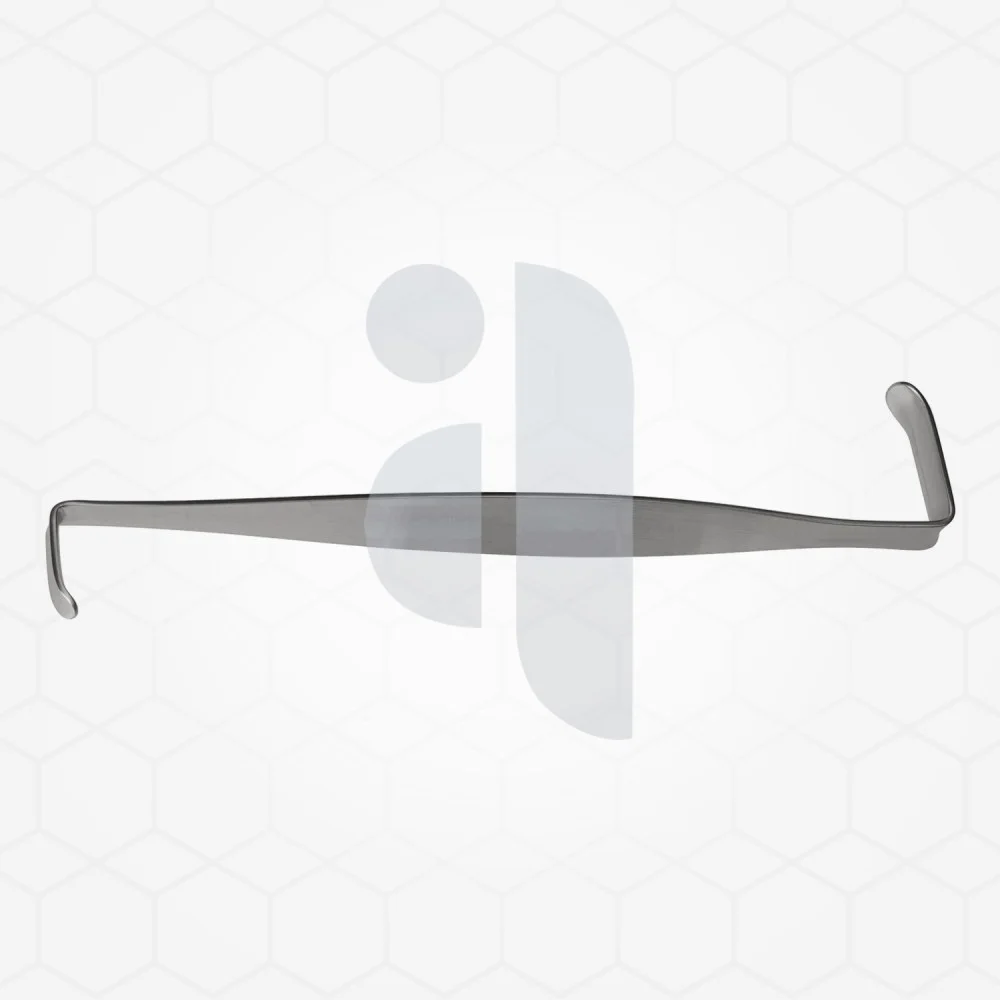The Crile Retractor: Precision in Surgical Exposure
In the demanding environment of the operating room, every tool plays a crucial role in achieving a successful outcome. Surgeons rely on instruments that offer precision, reliability, and ergonomic comfort. One such indispensable tool, often found in surgical trays for a variety of procedures, is the Crile Retractor. Its simple yet effective design provides surgeons with the clear visibility and access needed to perform delicate tasks with confidence. This instrument is a testament to how fundamental design can have a profound impact on surgical efficiency and patient safety.

Understanding the Design and Function
The Crile Retractor is a handheld, double-ended instrument characterized by its C-shaped blades at either end. These blades are smooth and curved, designed to gently hold back tissues and organs, creating an unobstructed view of the surgical site. The different sizes of the blades on each end offer versatility, allowing the surgical team to adapt to the specific anatomical requirements of the procedure without needing multiple separate instruments. This adaptability is key in dynamic surgical environments where conditions can change rapidly.
Manufactured from high-grade stainless steel, the retractor is built for durability and can withstand the rigorous sterilization processes required in medical settings. chin retractor lightweight nature ensures that it can be held for extended periods without causing undue fatigue to the surgeon or assistant. The primary function of this tool is to provide atraumatic retraction, meaning it holds tissues apart without causing damage. This is essential for protecting delicate structures and promoting better post-operative healing for the patient.
Applications Across Surgical Specialties
The versatility of the Crile Retractor makes it a valuable asset in numerous surgical fields. In general surgery, it is frequently used to retract skin, subcutaneous tissue, and muscle during procedures like hernia repairs or appendectomies. Its gentle curve is ideal for maintaining a clear field in small to medium-sized incisions, ensuring the surgeon can work efficiently and safely.
Beyond general surgery, the instrument finds its place in more specialized areas. In plastic and reconstructive surgery, it aids in lifting skin flaps and providing exposure during delicate tissue reconstructions. Vascular surgeons may use it to gently hold back vessels and surrounding tissues. The elegant simplicity of the Crile Retractor allows it to be adapted for countless applications where shallow or superficial retraction is necessary, making it a true workhorse in the operating room.
The Importance of Quality Instrumentation
The performance of any surgical instrument is directly linked to its manufacturing quality. For a tool like the Crile Retractor, superior craftsmanship is non-negotiable. Poorly finished edges could cause tissue trauma, while weak materials could lead to instrument failure at a critical moment. This is why surgeons and medical facilities must partner with manufacturers who prioritize excellence.
Companies like Azeemed Instruments® are dedicated to providing high-quality surgical tools that meet the rigorous needs of medical professionals. They understand that every instrument, from a complex endoscope to a fundamental Crile Retractor, must be crafted to the highest standards. By using premium materials and adhering to strict quality control processes, they ensure that each tool delivers consistent, reliable performance. This commitment to quality supports better surgical outcomes and enhances patient safety, reinforcing the trust that surgeons place in their instruments.
Ensuring Proper Care and Handling
To maintain its function and longevity, the Crile Retractor requires proper care and handling. After each use, it must be thoroughly cleaned to remove all biological debris before undergoing sterilization, typically in an autoclave. Proper sterilization protocols are critical to prevent surgical site infections. Inspecting the instrument for any signs of wear, damage, or corrosion is also an essential step. A well-maintained instrument not only performs better but also contributes to a safer surgical environment for everyone involved.
In conclusion, the Crile Retractor stands as a prime example of an instrument whose simple design provides immense value in the operating room. Its ability to deliver safe and effective tissue retraction makes it indispensable across a wide range of surgical procedures. The reliability of this tool underscores the importance of sourcing high-quality instruments from trusted manufacturers, ensuring that surgeons have the best possible tools to provide exceptional patient care.